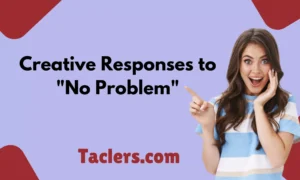Definition and Importance
Absurdity in humor is all about taking reality and twisting it into something wildly illogical or fantastical. It’s a style that defies reason and logic, creating scenarios that are so outlandish, they become hilarious. This kind of humor plays with our expectations and the established norms, often leading to moments of surprise and delight.
Examples of Absurd Humor
- Monty Python’s Flying Circus: This classic British comedy group is known for their absurd sketches. One notable example is “The Ministry of Silly Walks,” where John Cleese’s exaggerated, ridiculous walk becomes a bureaucratic pursuit.
- Absurdist Literature: Franz Kafka’s “The Metamorphosis” is a quintessential example. The story begins with Gregor Samsa waking up to find himself transformed into a giant insect, a premise that is both absurd and deeply intriguing.
Techniques of Absurd Humor
- Exaggeration: Amplifying reality to an extreme level, creating a sense of ridiculousness. For instance, a character might react to a minor inconvenience as if it were a life-or-death situation.
- Incongruity: Presenting something that defies logical consistency, such as a cat giving a lecture on quantum physics.
- Non-Sequiturs: Statements or conclusions that do not logically follow from the previous argument or statement. For example, responding to a question about dinner plans with “I prefer my eggs scrambled on Tuesdays.”
Why It Works
Absurd humor works because it disrupts our expectations, creating a cognitive dissonance that triggers laughter. Our brains attempt to reconcile the illogical with the logical, leading to a humorous response. The unexpected nature of absurdity engages us, making the humor more memorable and impactful.
Unexpected Twists and Turns

The Element of Surprise
The element of surprise is a key component of humor. It involves setting up a predictable scenario and then subverting it, catching the audience off guard. This unexpected twist can turn an ordinary joke into an extraordinary one.
Examples of Unexpected Humor
- Stand-Up Comedy: Mitch Hedberg’s surreal one-liners are a prime example. His jokes often take unexpected turns, such as, “I used to do drugs. I still do, but I used to, too.”
- TV Shows: “The Twilight Zone” is renowned for its twist endings. Each episode builds up a seemingly normal story, only to end with a surprising, often eerie twist.
Techniques of Unexpected Humor
- Misdirection: Leading the audience to believe one thing and then revealing something completely different. For example, starting a joke about a doctor’s visit and ending it with an unrelated punchline about a talking dog.
- Timing: Delivering the punchline at the perfect moment, often after a brief pause, to maximize the impact of the surprise.
- Pacing: Building up the joke slowly and then delivering the twist swiftly, creating a stark contrast between the setup and the punchline.
Why It Works
Our brains are wired to enjoy surprises; the unexpected creates a jolt that enhances the humor. When we predict an outcome and something completely different happens, it stimulates our cognitive processes, making the humor more engaging and enjoyable.
Absurdity in Everyday Life
Daily Absurdities
Life is full of absurd moments that can be hilariously relatable. These moments often arise from mundane situations that take an unexpected or illogical turn, providing rich material for humor.
Examples of Absurd Everyday Situations
- Weird News Stories: Headlines like “Florida Man Tries to Ride Alligator to Work” exemplify the bizarre and absurd nature of real-life events.
- Personal Anecdotes: Sharing stories of everyday mishaps, such as accidentally sending a text meant for your partner to your boss, can highlight the absurdity in our daily lives.
- Bizarre Social Media Trends: Viral challenges and memes often embody absurdity, such as the “Tide Pod Challenge” or the “Mannequin Challenge.”
Techniques of Observational Humor
- Observational Humor: Finding humor in the mundane aspects of life. This involves keen observation and a witty take on everyday situations.
- Hyperbole: Exaggerating small inconveniences for comedic effect. For instance, describing a minor spill as if it were a catastrophic flood.
Why It Works
We all experience life’s little absurdities, and recognizing them in a humorous light creates a shared sense of amusement. By highlighting the ridiculousness of everyday situations, we connect with others over our common experiences.
Critical Remarks and Social Commentary
Humor as Critique
Absurd and unexpected humor can also serve as a powerful tool for social critique. By exaggerating and twisting reality, humorists can highlight societal flaws and encourage critical thinking.
Examples of Humor as Social Commentary
- Satirical Shows: “The Daily Show” uses absurdity to highlight political and social issues. Through exaggerated scenarios and characters, the show critiques real-world events and policies.
- Absurd Political Cartoons: These cartoons use exaggeration and absurdity to critique societal norms and political decisions, often making poignant points through humor.
Techniques of Parody and Irony
- Parody: Mimicking something in a humorous way to highlight its flaws. For example, a parody of a political speech that exaggerates the rhetoric to absurd levels.
- Irony: Saying the opposite of what one means to illustrate a point. For instance, describing a disastrous policy as “brilliantly thought out” to emphasize its incompetence.
Why It Works
Humor disarms audiences, making them more receptive to critique and reflection. By using absurdity and unexpected twists, humorists can engage their audience in a dialogue about important issues, encouraging them to think critically about the world around them.
Crafting Your Own Absurd and Unexpected Humor
Step-by-Step Guide
Creating your own absurd and unexpected humor involves a blend of creativity, observation, and timing. Here’s a step-by-step guide to help you craft your own unique brand of humor.
Finding Inspiration in the Mundane
Look for the absurd in everyday life. Notice things others overlook, and think about how you can twist them into something funny. For example, imagine your toaster has a personality and gets jealous of your microwave.
Playing with Language and Structure
Use puns, wordplay, and surreal dialogue. Experiment with different ways of structuring your jokes to keep your audience on their toes.
Testing and Refining Jokes
Try your humor on friends or social media to see what resonates. Pay attention to what makes people laugh and refine your jokes based on their reactions.
Examples of Absurd Scenarios
- Talking Animals: Imagine a scenario where your pet gives you life advice.
- Outlandish Situations: Create a situation where a mundane object, like a coffee mug, becomes sentient and starts demanding better working conditions.
Tips for Crafting Absurd and Unexpected Humor
- Balance Absurdity with Relatability: Ensure the humor is grounded enough for audiences to connect with it. Too much absurdity can alienate the audience.
- Keep the Audience in Mind: Tailor your humor to what your audience finds funny. What works for one group might not work for another.
Why It Works
Combining absurdity with unexpected elements creates a rich, engaging comedic experience. By keeping your audience guessing and providing fresh, original humor, you can keep them entertained and coming back for more.
Conclusion
Absurdity and the unexpected are powerful tools in humor, making us laugh and think in equal measure. Whether it’s through exaggerated everyday situations, surprising punchlines, or sharp social commentary, these elements can make humor more engaging and impactful. So next time life throws you a curveball, laugh it off – it might just be the start of your next great joke.

Justin Taylor is a storytelling maestro at Taclers.com, blending humor and heart in his captivating articles. With a rich background in creative writing, he has a unique talent for turning everyday reactions into extraordinary tales. Dive into his work for a delightful read that always hits the mark.










